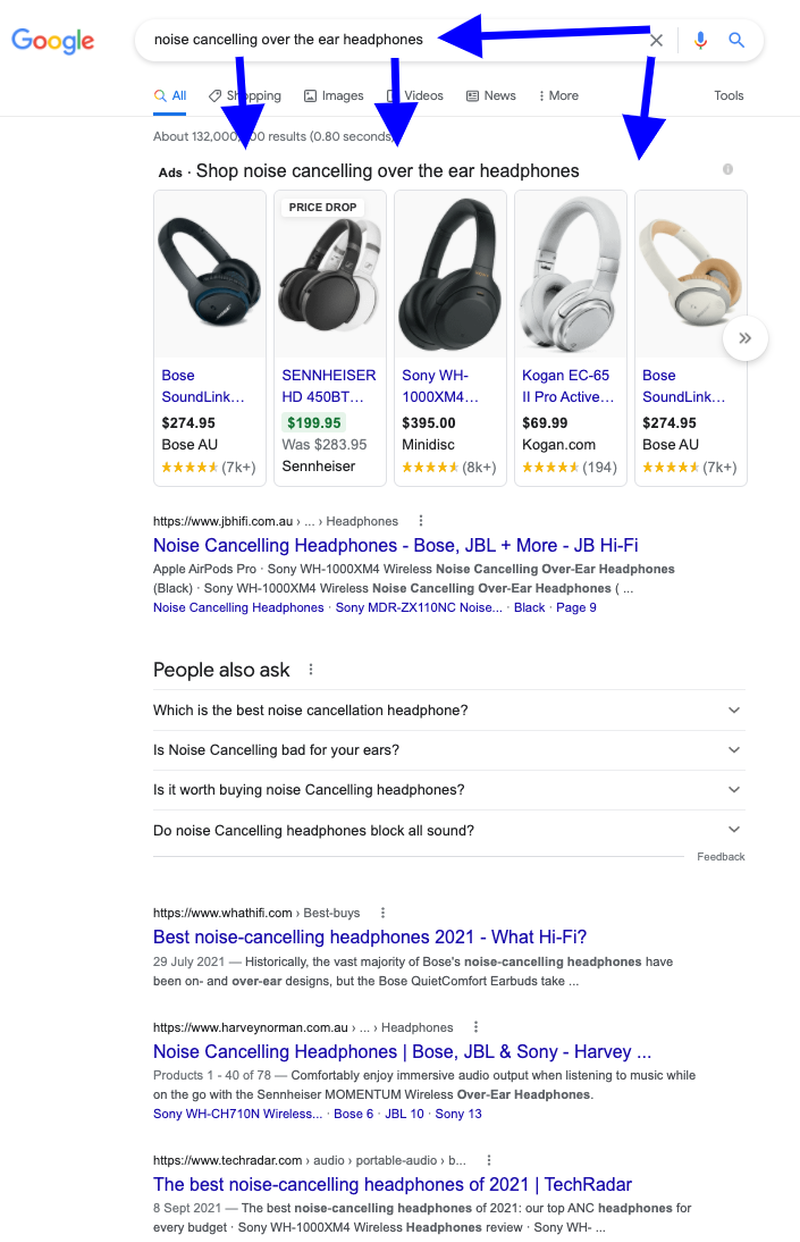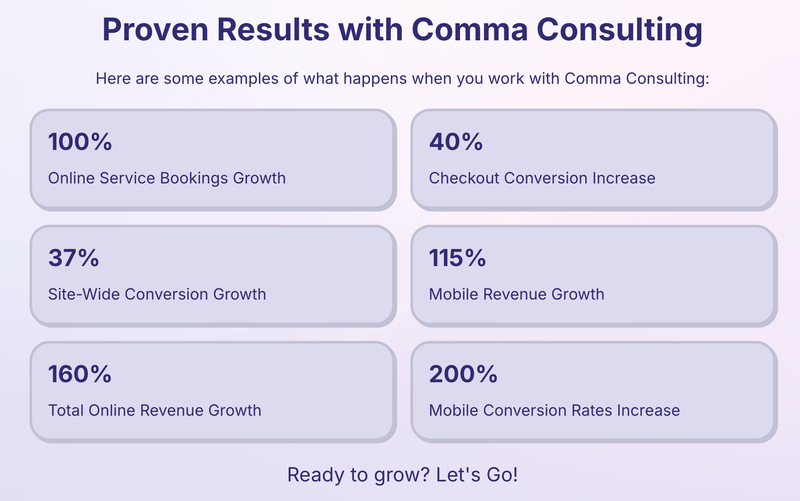
Research conducted by Forbes, the Huffington Post, and Marketing Signals found 90% of all eCommerce businesses fail within the first 120 days of launch.
The research polled 1,253 failed leaders and asked them to list what they believe to be the top 10 reasons why the business failed (see the top 10 below). This article lists these top 10 reasons and unpacks the real causes for eCommerce business failure.
The lessons learned apply to all businesses seeking to drive more revenue from their eCommerce channels.
Before digesting the top 10, first, a brief look at why the eCommerce channel is the most complex business channel in history.
Why is eCommerce success hard?
Three fundamental dynamics contribute to the demise of eCommerce businesses....
#1. Digital experiences require rules-based technologies:
In physical retail, salespeople are charismatic, build rapport, and adjust their approach to selling based on a conversation with a customer. In online retail, every aspect of rapport building and selling is based on eCommerce Platforms, which are rules-based: 1's and 0's.
All eCommerce Platforms require a high degree of manipulation to become engaging for people.
The activation of AI models in online retail faces the same challenge. While AI may be deemed "self-learning", it requires the right behavioural context to learn and be effective.
Research proves AI models must work with eCommerce best practices to become truly powerful (click here to read).
#2. eCommerce best practices:
eCommerce and online retail have been around since the mid-90s, and as a result, there are decades of best practices that can/should be leveraged, which continue to be ignored.
Launching an eCommerce start-up (or enhancing an existing eCommerce website) can benefit from embedding the proven sciences.
#3. Collaborate with an eCommerce Specialist:
Would you build a new home or commercial office building without an Architect? Instead, would you work directly with a building company without a blueprint?
Think of the eCommerce specialist as the Architect who works with you to create the blueprint and collaborates with various building teams to bring the plan to life. Too many businesses try to do this on their own, when in fact, a specialist skill set is needed to plan this channel.
The top 10 reasons why 90% of all eCommerce startups fail within the first 120 days
1,253 failed business owners participated in this research, which identified 10 common reasons for failure...
- Poor online marketing - 37%
- Lack of online search visibility - 35%
- Little to no market for their products or services - 35%
- Running out of cash - 32%
- Price and costing issues - 29%
- Got outcompeted - 23%
- Retail giants dominating a large share of the market - 19%
- Lack customer service - 16%
- Poor team - inadequate knowledge of how to drive eCommerce - 14%
- Product mistiming - 11%
The above percentages do not equal 100 because participants could select more than one reason.
The remainder of this article examines each of the top 10 reasons and unpacks the underlying reasons why these businesses failed.
#1. Poor Online Marketing (37%) and #2. Lack of online search visibility (35%)
The top two excuses comprise a significant portion of the reasons for failure. The research had these specific comments to say about online marketing and the lack of visibility….
A staggering 37% said that their failure could be attributed to an inability to compete or deliver online marketing, with 35% saying a lack of online visibility was the main factor.
To be successful in online marketing, two fundamental best practice principles must work together….
- Being targeted and visible in Google for the right types of consumer buying intent
- The construction of highly relevant consumer journeys to match the buying intent
Point #2 is known as UX (user experience) Design, the ability to construct relevant experiences that align the journey with the user's needs.
For example, if a retailer sells “noise-cancelling over-the-ear headphones”, they must activate the online marketing campaign to be visible when consumers search for this term. Then, send the consumer to the part of the site designed for people who need or want “noise-cancelling over-ear headphones.”
You cannot have one without the other. They must work together. This is the NEW SEO (see more on this below).

Figure 2
Consumers are more loyal to their own need than to a brand.
Intent beats identity
This approach is known as the Pull Marketing Strategy.
When business owners say online marketing was "poor", the issue is that the eCommerce website did not have the relevant journeys to engage with people who have specific buying intent.
Lack of online search visibility (SEO):
Google has changed the SEO game and has amplified its reward of free visibility to those retailers who can engage with people with intent-driven needs.
If a retailer cannot engage, it will not benefit from free visibility in Google.
#3. Little to no market for their products or services - 35%
This is an unusual excuse when considering the reality of a startup...
1. New startups typically conduct thorough research to determine if there is a market for their product.
2. For a business to fail within 120 days, it would be difficult to determine if this has come as a result of there being no market for their product.
Even if you gave this excuse the benefit of the doubt, niche works online. Niche = a product and/or service that meets a highly specialized segment of the market. If the online marketing was working to standard, it would enable precise targeting.
Combine precise online marketing with exemplary UX Design, and you have a recipe for success.
A great example of this in action is a travel bag company called Nomatic.
This is a niche online-only retailer specialising in high-end and premium travel bags. This brand has successfully gone up against such juggernauts as Samsonite, Eagle Creek, Travelpro, etc.. Nomatic's online experiences surpass competitors.

Figure 3
It's easy to see the high standard of eCommerce strategic planning and UX Design that has gone into this business.
#4. Running out of cash - 32%:
Burning cash is a legitimate cause for business failure, but the broader issues stem from the call-outs mentioned above. It's easy to burn cash if online marketing is not working and poor traffic is coming to the site, resulting in poor online experiences that lead to little to no sales.
#5. Price and Costing issues - 29%
Costing issues are commonly a business spending too much to acquire a customer. The margins cannot sustain a “high cost per customer acquisition” (cost per acquisition refers to the measurement of how many marketing dollars are needed to acquire a single customer).
As stated earlier, a high cost to acquire is often the result of poor online experiences that fail to convert into sales.
Social = high cost to acquire
One of the more costly methods for acquiring customers is when too much emphasis is placed on Social strategy. This is a common pitfall that startups often fall into.
Some startup brands state their business was founded on a "Social strategy", but what they don’t tell you is the cash burn it took to gain that momentum.
Social tactics are fun and sexy but not as effective.
Why is this the case?
Social targeting is based on profiling. For example, Facebook and Instagram are in the business of selling profiling data. Just because you know a person’s interest does not mean you can predict a need.
Properly harnessing Google advertising allows a business to be visible in Google at the precise moment a consumer defines a specific need.
Have a look at the two examples below...

Figure 4

Figure 5
Meta profiling suggests that the target market for a Baby retailer would be mothers, but research shows the larger market is actually among friends and surrounding families, including grandparents, aunts, and others.
The same misleading attempts in profiling can be found with gamers, and the assumption that it's mostly made up of young men.
Google research goes on to say...
Marketers who try to reach their audience solely on demographics risk missing more than 70% of potential mobile shoppers.
#6. Being “Outcompeted” – 23%:
Translation: Other online retailers converted more effectively than the failed business.
Every startup enters "acquisition mode"; if a young business cannot engage and convert the target market, it will always be perceived as being "outcompeted". See comments above.
This is another example of a failed business not having an eCommerce Consultant/Expert developing their "digital salesperson" and the correct type of visibility strategy.
#7. Retail giant dominating a large share of the market – 19%:
The beauty of online retail is that every business is on a level playing field. This notion of a “retail giant” is a convenient excuse for failure.
Look no further than disruptive online retailers such as Warby Parker (online prescription glasses) and Casper (online bed retailer), which went up against retail juggernauts and took over their respective markets by focusing on delivering customer-centric experiences and highly targeted online marketing strategies.

In the case of Warby Parker, it's also important to note that they excelled past their competitors because they built a customer-centric technology infrastructure. Meaning, all their systems are designed to support the needs of customers.
This is the advantage of new eCommerce business models. They are not hindered by legacy systems. The ability to transfer information freely between systems is a significant competitive advantage.
This is how and why you see these eCommerce businesses excel so quickly.
However, to effectively leverage this type of advantage requires working with an eCommerce expert and embarking on strategic planning activities.
#8. Lack of Customer Service – 16%:
This is a legitimate issue and should be much higher than 16% on the "excuse scale". One of the bigger issues is the lack of accessibility to real people who can assist consumers in recovering from poor online experiences.
The Customer support function in a business is often viewed as a cost when it should be considered an integral part of the sales and loyalty functions.
This from Gartner on business impacts of having the right support function in place:
Customers who experience value-enhanced service interactions are far more likely to stay — whether the barriers to switching are high or low
For online retailers unsure of what eCommerce experiences should look like, it's crucial to enhance employee accessibility and be prepared to respond when people need assistance.
The data you collect from this support function becomes a gold mine of insights, producing a robust UX design plan for later use.
It's OK not to get the UX design perfect for launch, but have the support function ready to recover and capture that valuable first-party data.
#9. Poor team (14%) and #10. Product mistiming (11%):
It's comical when a business owner blames the team they brought into the business.
The "poor team" excuse can be many things...
- A poorly resourced support team (see above).
- The wrong approaches to marketing (see above).
- The absence of an eCommerce Consultant to guide resources.
The perception of product mistiming is a byproduct of all the other issues above. As mentioned earlier, no business will launch if it feels there is no demand for its product.
Conclusion:
When reflecting on the excuses and illustrating the real reasons for failure, the conclusions are clear. Business leaders are at the mercy of an eCommerce channel that is highly complex and fraught with pitfalls and traps throughout.
The key to success is to first collaborate with an eCommerce specialist who can help you fully leverage the strengths behind your new business and the products you offer.
Additionally, design a Phase 1 approach to an eCommerce channel that enables you to achieve early successes without incurring significant costs. And at the same time, capture valuable data that can be used to drive iterative growth.
Without this as the foundation, you will fall into the 90% of failures that continue to happen regularly.
Benefits of working with an eCommerce Expert = Results:
When you work with an eCommerce Expert like Greg from Comma Consulting, these are the types of results you can expect...

Ready to grow? Let's Go! Click here to contact Comma Consulting now.
This article was as tagged as Customer Service , Digital Strategy , Digital Transformation , eCommerce Conversion Rate Optimisation , SEO , UX Design